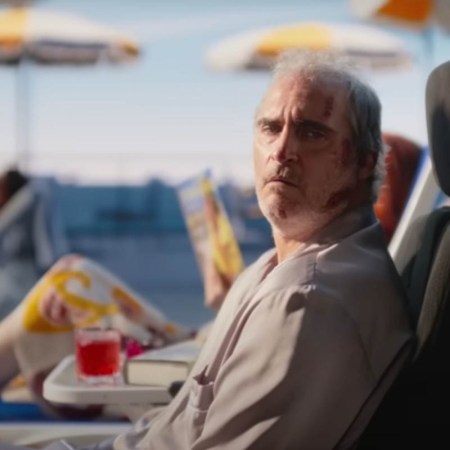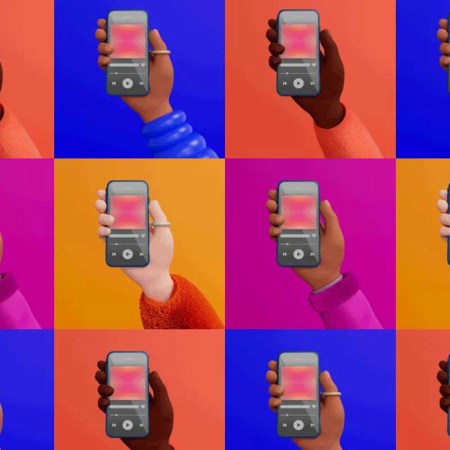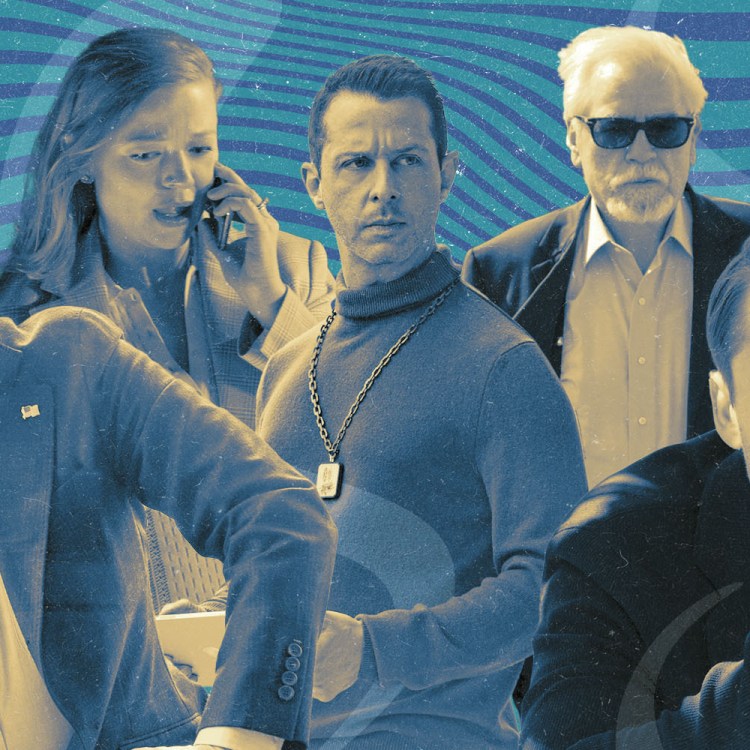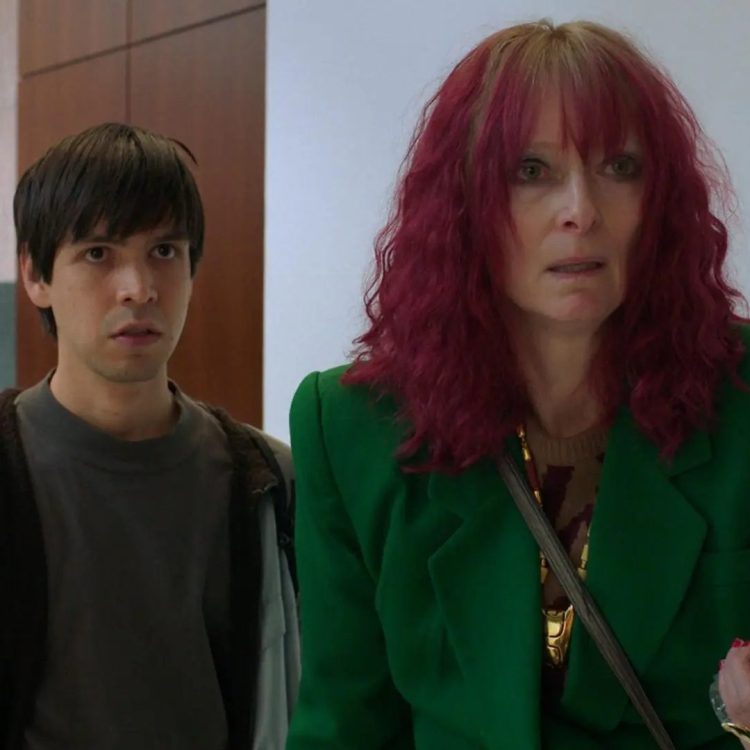Ten years ago this week, a comedy about a foul-mouthed catering crew called Party Down debuted on Starz. Thirteen months later, the network unceremoniously canceled it after just two seasons.
Having recently binged the show over the course of a particularly lazy weekend, I can’t believe it got the axe so quickly. It hits its stride only a few episodes in (rare for a comedy) and received positive reviews from critics and viewers alike. The only issue is there were too few of the latter.
Got me thinking: If Party Down were around today, it would thrive, right? It’s exactly the type of series the streaming giants love: modest but devoted audience, high rewatchability and a cast full of household-names-to-be (Jane Lynch, Adam Scott, Lizzy Caplan).
Consider that in 2009, Starz had 17 million subscribers, which pales in comparison to the 139 million subscribers that Netflix currently boasts. That’s eight times more people that could have been algorithmically introduced to a show with one of the lowest operating budgets of its era.
These days, the near ubiquity of streaming means that any show produced and promoted by Netflix and its ilk (Amazon Prime, HBO Go, Hulu) has a chance at instant success. Netflix alone made 700 original series in 2018, and they’ve only recently begun to adopt the network practice of aggressively culling shows with low viewership. And we’re not even at peak content yet, with both Disney and Apple planning to launch streaming services later this year.
Taking all that into account, it stands to reason that something as smart, inventive and star-studded as Party Down would have enjoyed a long, healthy run had it been born a decade later. But it wouldn’t be alone: below, we celebrate the 10 best shows that streaming could have saved — including a couple that it actually did.
Party Down
March 20, 2009 – June 25, 2010, two seasons
Why it was great: Each episode takes place at a different event the Party Down company is catering, allowing for season-long arcs to play out over a wide variety of settings, with frequent cameos from budding actors (Kevin Hart, Christopher Mintz-Plasse, Josh Gad). This format allows for the core cast (Adam Scott, Lizzy Caplan, Ken Marino, Martin Starr, Jane Lynch) to show off their comedic rapport via constant tomfoolery and site gags. Despite their incompetence, though, the characters are decidedly human: each receives just enough positive attributes and small wins to keep the viewer interested. One of the smartest and funniest shows I’ve ever watched.
Why it got canceled: Mainly due to low viewership. It also didn’t help that after the second season they lost Jane Lynch to Glee and Adam Scott, the closest thing to a main character this ensemble cast had, to Parks & Rec.
Where you can watch it: Streaming: Hulu, Starz, Amazon –Eli London, Director of Partnerships
Twin Peaks
April 8, 1990 to June 10, 1991, two seasons
Why it was great: No one had ever seen anything like it on TV before. Period. But it became a hit because co-creator David Lynch’s surreal cinematic originality that drew in the Richard Brodys of the world was paired with time-honored serial television themes, from the whodunit murder mystery to the will-they-or-won’t-they love story, which brought in those who normally tuned into Cheers. (Twin Peaks premiered on ABC in the same time slot as the NBC sitcom, and singlehandedly reduced its ratings.) Plus, who doesn’t want to be Dale Cooper?
Why it got canceled: The journey from Best Drama Series at the Golden Globes to cancelation in five months is complicated. It may include ABC changing the time slot willy-nilly, creative differences between the artists and the network, and even a love triangle of sorts between Lara Flynn Boyle, Kyle MacLachlan and Sherilyn Fenn. But at its core, Twin Peaks couldn’t sustain Cheers-level interest once the murder of Laura Palmer was solved in the middle of the second season. If Lynch had his way from the beginning, he never would have answered that question. Even so, the series was followed by the prequel film Twin Peaks: Fire Walk With Me and eventually a third season from Showtime in 2017.
Where you can watch it: Netflix, Hulu, Amazon Prime Video –Alex Lauer, Senior Editor
Firefly
September 20, 2002 to August 4, 2003, one season
Why it was great: A western in space created and overseen by Joss Whedon (Buffy the Vampire Slayer, Avengers), Firefly had heart, geekiness and an incredible ensemble (love you, Nathan Fillion!). It’s hard to create a new universe, but Whedon seemed well on his way to making his own world(s) … and having a hell of a lot of fun doing it.
Why it got canceled: For no good reason, Fox showed the first episodes out of order, and also waited a month between showing the second and third. With no “known” characters to latch onto and an awkward starting point — why you putting western tropes in my sci-fi? — the show quickly faded. Thankfully, fandom helped deliver a really good movie follow-up called Serenity.
Where you can watch it: Hulu –Kirk Miller, Managing Editor
Freaks & Geeks, Undeclared
F&G: September 25, 1999-July 8, 2000
Undeclared: September 25, 2001-March 12, 2002
Why they were great: Because A) these two shows, despite their criminally short runs, mark the beginning of the Judd Apatow rocket ship really taking off: loveable underdogs struggling through life’s trials and tribulations in ways that are often simultaneously hilarious and heartfelt has become Apatow’s signature, and these two collections of misfits (navigating high school and collegiate life, respectively) embody that brand in a way that’s arguably more pure and realistic than any of Apatow’s subsequent work. And B) you can’t throw a rock in the worlds of these two shows without hitting now-marquee talents in their nascent stages, both in front of the camera (James Franco, Seth Rogen, Charlie Hunnam, Jason Segel) as well as behind it (Jake Kasdan, Paul Feig, Lesli Linka Glatter, Jay Chandrasekhar).
Why they got canceled: The usual Hollywood clusterf*ck of shuffling time slots and low-ratings-despite-critical acclaim, but with a couple of interesting wrinkles: first, various sources (including Rogen) have speculated that then-new NBC president Garth Ancier was ill-equipped to understand public school life and its relevance, having gone to boarding school and then on to Princeton. Second, in a move that possibly signaled early faith by F&G’s creators in the world of digital, they created a website to help fans keep track of the show — but, according to Apatow, NBC wouldn’t share the URL because “they didn’t want people to know the internet existed. They were worried about losing viewers to it.”
Where you can watch them: Shockingly, neither F&G or Undeclared is currently available for streaming on any of the major platforms — the only place your correspondents could find the former is via DailyMotion (which ain’t the greatest quality but it’s free, so whatever), and the latter appears to be available only on a pirate YouTube feed (same deal). Maybe time to dust off the ol’ DVD player? –Danny Agnew, Creative Director
Don’t Trust the B—- in Apartment 23
April 11, 2012 to May 13, 2013, two seasons
Why it was great: Krysten Ritter. Long before moping through Jessica Jones, Ritter played a party girl named Chloe who scared away roommates and was so brazenly awful and shifty, she was instantly the most interesting character on television (she could sell the hell out of the phrase “pound town”). Having Eric Andre and James Van Der Beek around didn’t hurt, either — especially with Van Der Beek playing himself and displaying heretofore unknown comedic chops.
Why it got canceled: A midseason replacement, ABC renewed the show for a second season but aired the episodes out of order. Also, the attempts to have Ritter “learn” and become a slightly better person would have thankfully been axed had the show been on, say, FX or Netflix (which probably wouldn’t have censored the title, either). Having the show off a major network also could have allowed Andre to fully showcase his bizarre sense of humor.
Where you can watch it: Hulu –Miller
Bored to Death
September 20, 2000-November 28th, 2011
Why it was great: Because of its stupid, completely unnecessary premise. Jason Schwartzman plays a novelist who can’t write his second book and decides to make a Craiglist ad claiming he’s a “unlicensed private investigator.” Cases start rolling in, and he enlists friends Ted Danson (pot-addicted lothario and chief of a prominent New York magazine) and Zach Galifianakis (a lazy, lovesick cartoonist) to help. The stakes are impossibly low on each mission (you’re usually rooting for Schwartzman to get caught) and the romantic subplots are usually discarded without warning. But, it’s so watchable. Think: constant shots of Brooklyn in the sunlight, Danson waltzing around the set riffing half his lines, and no-asked-for-that descents into the New York subterranean, exploring everything from sex dungeons to magazine feuds to Russian mafia restaurants out in Brighton Beach.
Why it got canceled: According to showrunner (and novelist, by the way) Jonathan Ames, because “Sunday night is [HBO’s] night.” This was 2011, when HBO really had to care about competitive programming, and the show couldn’t be flexed to Monday night, for fear of being drowned by Monday Night Football and Two and a Half Men. People were pretty pissed at the time, even making a petition to bring the show back, but that was that. Fascinatingly, Ames sort of predicted his own show’s streaming survivability. He said in an interview to Vulture: “If you count all the DVR, HBO Go, replay viewership, we were in the millions. That’s one of the things that’s annoyed me a little bit about the coverage of the cancellation … Maybe we need to change the model.”
Where you can watch it: HBOGO/HBONOW –Tanner Garrity, Associate Editor
Veronica Mars
September 22nd, 2004 to May 22nd, 2007
Why it was great: Almost all detective shows are great, but what made the teen noir mystery drama Veronica Mars great was, well, Veronica Mars. It was pretty dope to watch a character not only be a young, intelligent, snarky, kick-ass woman who saves the day, but watch her do all that while she dealt with her own relatable traumas, from minor-but-still-troubling experiences like being dumped by her boyfriend to major ones like her best friend’s murder and the aftermath of her own sexual assault. And she still cracked the cases, and jokes, along the way.
Why it got canceled: For one, it had low ratings. The CW was going after a very specific audience, and Veronica Mars was difficult-to-categorize. Consequently, it was hard to bring in new viewers. It was also a former show of UPN, and when Warner Brothers and UPN merged, more WB shows survived the marriage. V-Mars was the first UPN show to go. But perhaps most importantly, the show had intricate storylines which required the viewer to pay closer attention. Prime for the binge-watching era, not so ideal commercially.
Where you can watch it: Currently, you can watch the entire series on Amazon Prime. But if you haven’t heard the glorious news, Hulu is reviving the series with an 8-episode, direct-to-series order with OG Veronica Mars Kristen Bell. And starting this summer, Hulu will also be streaming all three original seasons, so you can catch up before the still unknown series premiere. –Logan Mahan, Editorial Intern
Arrested Development
November 2, 2003 to February 10, 2006, three seasons
What made it great: Arrested Development broke from the sitcom conventions set forth by ‘90s fare like Friends and Seinfeld in myriad and dazzling ways: No laugh track. Documentary-style editing and photography that would be coopted by the likes of The Office and Parks and Rec. An unflinching commitment to wordplay, obscure callbacks and running gags that would’ve read as puzzling non-sequiturs to an unfamiliar audience (read: the fact that no one can properly execute a chicken dance). Sitcoms were designed to be easily digestible fodder that audiences could drop in and out of as they pleased; AD, meanwhile, demanded an intimate knowledge of the characters and the world they inhabit. This means a level of self-satisfaction attends every laugh: you’re not just understanding the joke, you’re signaling to everyone present, “Hey, I understand that joke!”
Why it got canceled: Unsurprisingly, the show’s insular nature turned away more viewers than it attracted: despite rave critical reviews and a spate of Emmy nominations, it ranked 88th in the Nielsen ratings among audiences aged 18-49 during its first season. After three season, Fox chose not to renew, and despite interest from Showtime, showrunner Mitchell Hurwitz moved on to other projects. But Arrested Development found a second life on streaming services, and Netflix picked up a fourth season in 2013.
Where to watch it: Netflix and Hulu –Walker Loetscher, Editor in Chief
Sports Night
September 22, 1998-May 16, 2000, two seasons
Why it was great: Aside from an undeniably excellent premise (essentially a fictionalized account of SportsCenter’s early heyday, with Peter Krause’s Casey McCall and Josh Charles’ Dan Rydell standing in for Dan Patrick and Keith Olbermann), Sports Night introduced television audiences to the unique and polarizing writing style of Aaron Sorkin. Love it or hate it (our office features folks in both camps), there’s no denying that Sorkin’s now-signature hallmarks of rapid fire banter (often conducted on-the-move, coining the Hollywood aphorism “walk-and-talk”) and high-minded soliloquies have influenced countless great shows and films (some Sorkin’s own) over the last two decades. Plus Robert Guillaume was the fucking man.
Why it got canceled: Sorkin’s style was perhaps ill-suited to the 30-minute comedy sitcom format — he famously battled with studio execs over the inclusion of a laugh track, which features in early episodes but fades out completely by the second season — and ABC’s marketing team struggled with a product that wasn’t quite comedy, wasn’t quite drama, and featured characters talking way faster/smarter than audiences were used to. It bears noting that Sorkin had the option to take Sports Night to both HBO and Showtime after ABC canceled it, but ultimately decided to pass and focus on what would be his massive breakout hit, The West Wing.
Where you can watch it: Amazon Prime Video, iTunes, Google Play and Youtube –Agnew
Deadwood
2004-06, three seasons
Why it was great: In terms of drinking, wanton sex and old-timey cursing (1.56 utterances of “f*ck” per minute of footage), Westworld can’t hold Deadwood’s stirrups. Portrayed at a leisurely (each episode covers a day, each season covers two weeks), the show is savage, witty and doesn’t hesitate to kill off characters big and small. It’s also where Timothy Olyphant honed the gunslinging bona fides he put to even better use in Justified (a great show with a better ending).
Why it got canceled: HBO declined to pick up the options for the actors following Deadwood’s third season. Though the network didn’t cancel the show outright, they effectively did by eliminating the chance it could return for a fourth season with its original cast and crew. But fear not, a movie featuring most of the original cast should premiere this spring on HBO.
Where you can watch it: HBO Now, Amazon Prime –Evan Bleier, Senior Editor
This article was featured in the InsideHook newsletter. Sign up now.





















